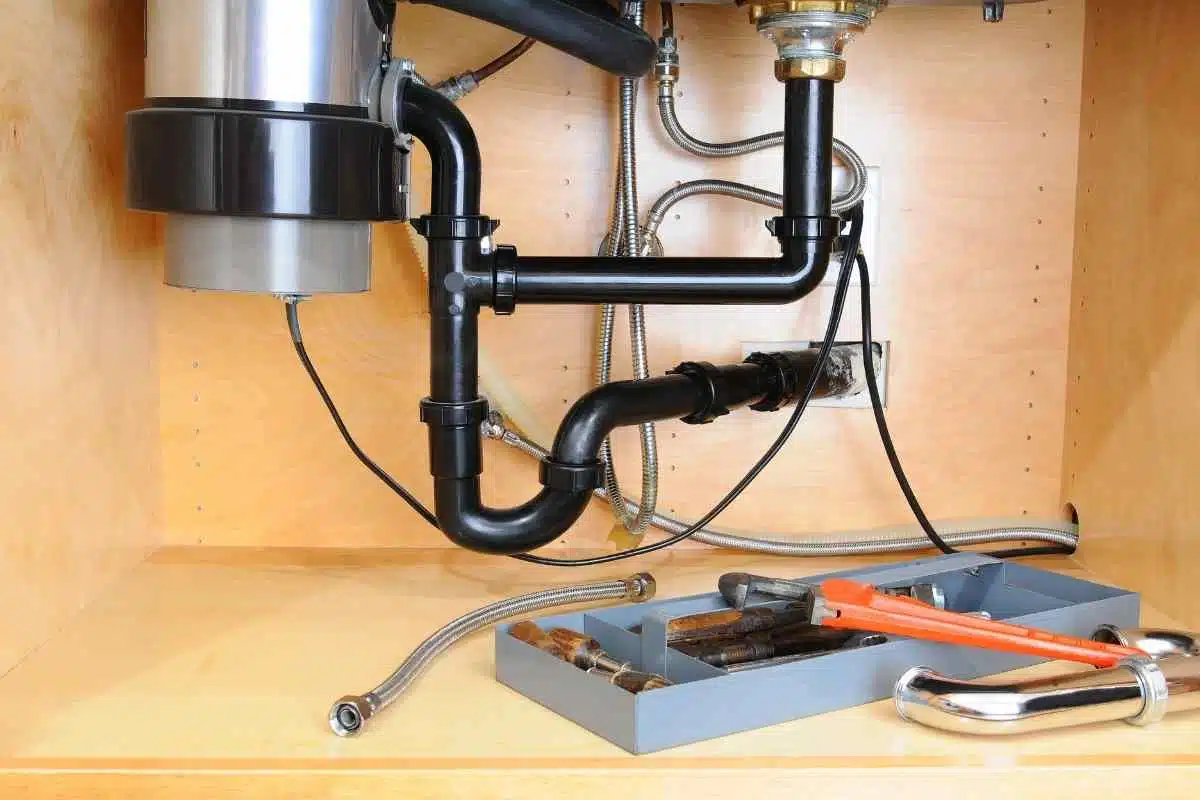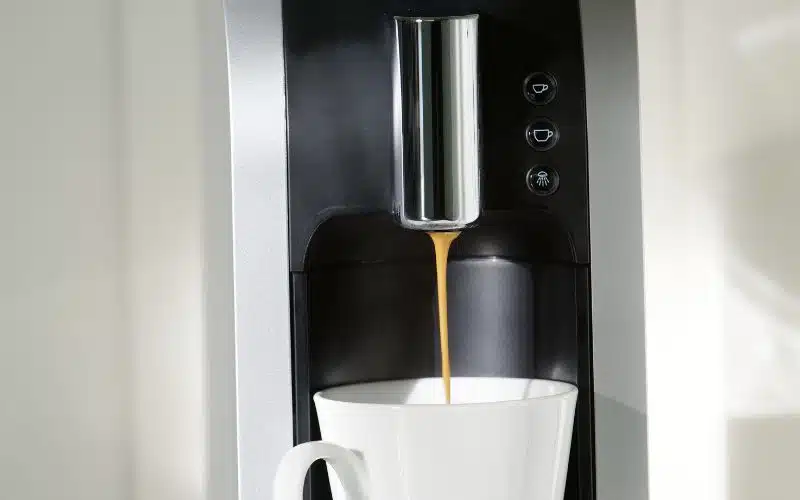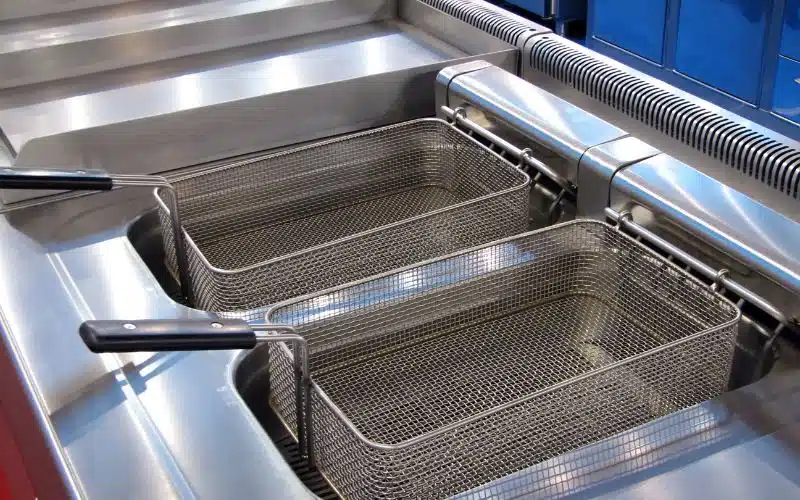What’s hiding under your kitchen sink? It’s not just pipes and cleaning supplies. There’s something called a GFCI, and it’s pretty important.
But do we really need it there? Some say it’s a must-have for safety, while others think it’s just too much.
In this article, we’re going to explore if having a GFCI under your kitchen sink is essential or just overkill.
Get ready to uncover the truth and see what’s best for your home!
Key Takeaways
- Safety First: The National Electrical Code says that all outlets near a kitchen sink (within 6 feet) must have GFCI (Ground-Fault Circuit Interrupter) to prevent electrical dangers.
- Installation Guidelines: If you put outlets under the sink, they must be installed carefully, usually by a trained electrician. This is important because they are close to water.
- GFCI Essentials: GFCI outlets protect you from electric shocks when it’s wet. They are needed within 6 feet of the kitchen sink. If there’s no water risk further away, they’re not needed.
- Local Codes Matter: Always check the electrical rules in your area. They might be different from the National Electrical Code and could have extra rules.
Can You Put an Electrical Outlet Under A Sink?
The National Electrical Code permits the placement of electrical outlets under the sink. These outlets commonly power dishwashers and garbage disposals.
When installing an outlet in this location, specific precautions must be taken due to its proximity to water.
- GFCI Protection: All outlets within 6 feet of the sink require GFCI protection to mitigate the risk of electrical shock in wet environments.
- Safe Installation: Even though under-sink areas are not classified as wet, they must adhere to safety standards to avoid any electrical hazards.
- Tradition and Convenience: Outlets for garbage disposals are traditionally installed under the sink for ease of use.

Planning Your Outlet:
- Verify your local electrical codes as they may have specific requirements or restrictions.
- Consult with an expert electrician to ensure a safe and compliant installation.
Considering the low risk of hazards, the National Electrical Code still recommends that electricians should install GFCI outlets in any household location that could be exposed to water, underscoring the importance of safety in these installations.
Does Every Outlet in a Kitchen Need A GFCI?
When outfitting your kitchen with electrical outlets, knowing the requirements for GFCI (Ground-Fault Circuit-Interrupter) protection is crucial.
GFCI outlets are designed to protect against electrical shock by breaking the circuit when they detect an imbalance between incoming and outgoing currents.
For your safety, it’s vital to provide GFCI protection for all outlets servicing areas within 6 feet of the kitchen countertop or sink.
This directive is grounded in the guidelines set forth by the National Electrical Code (NEC). However, not all kitchen outlets must have a GFCI.
Consider the following points:
- Only one GFCI outlet is needed per circuit if it’s the first in the line, shielding other receptacles downstream.
- Electrical outlets beyond the 6-foot boundary from the countertop and sink, such as those powering refrigerators, are exempt from this requirement.
Electrical outlets used for specific appliances, such as dishwashers, don’t typically require GFCI protection unless they are within 6 feet of the sink or at risk of water contact.
| Appliance | GFCI Required? | Condition |
|---|---|---|
| Dishwasher | Only if within 6 feet of the sink | Or if at risk of water contact |
| Refrigerator | No | If beyond 6-foot range |
| Coffee Maker | No | If placed away from water sources |
Remember to check your local electrical code, as it may have different or additional requirements than the NEC.
The local code takes precedence and should guide your installation process for kitchen outlets.
How Far Does A GFCI Have To Be From A Kitchen Sink?
The National Electrical Code dictates that GFCI protection is essential for any outlets within 6 feet of your kitchen sink.
The reason for this is simple: water and electricity pose a significant risk when they meet.
It’s crucial to keep electrical outlets away from wet locations to prevent short circuits and potential hazards.
- GFCI Requirements:
- Must be installed for all outlets within a 6-foot radius of the kitchen sink.
- Beyond this distance, GFCIs are not necessary unless there’s a risk of water contact.
Remember, the presence of water can make an otherwise safe area a wet location.
This proximity to water, such as when working at the kitchen sink, can create a dangerous scenario where a short circuit could occur.
A GFCI outlet in this zone can detect disturbances in electrical flow and shut off the power swiftly to prevent accidents.
These accidents can range from damaging appliances to serious personal injury, including electrocution.
For your safety, you’re advised to adhere strictly to these guidelines.
Check with local building authorities as well since local building codes might have additional stipulations or might override certain aspects of the NEC.
Your safety comes first, and ensuring proper GFCI installation is a step in the right direction.
How Can I Set Up GFCI Protection For An Electrical Outlet Under The Sink?
1. Replacing A Standard Electrical With A GFCI Outlet
To upgrade to a GFCI outlet under the kitchen sink, first ensure the circuit is off from the breaker panel. Carefully remove the existing electrical outlet and attach the new GFCI outlet.
Match the outlet to the circuit’s amperage for proper protection.
Reconnect the wiring, respecting the color coding: black to brass, white to silver, and green or bare wire to green screw. Restore power and test the GFCI outlet using a testing machine.
2. Installing A GFCI Circuit Breaker
For branch circuit-wide protection, consider a GFCI circuit breaker installation. Given the complexity and safety issues, hire a licensed electrician.
They will install a GFCI breaker at the breaker panel, which safeguards all appliances, including a washer or dishwasher, on the same circuit.
3. Using A GFCI-protected Extension Cord Or Extension Box
Utilize a GFCI-protected extension cord if immediate, temporary GFCI protection is needed.
Be aware that this method does not fulfill permanent installation codes.
Always consult local regulations when performing electrical work to ensure compliance.

Conclusion
Protecting your home from electrical hazards is critical. GFCI outlets are designed to prevent electrical shock and electrocution by instantly disconnecting the power if a ground fault is detected.
Here’s a quick guide to GFCI use:
- Location: Install GFCI outlets within 6 feet of your sink to comply with safety codes.
- Testing: Regularly use the test button on GFCI outlets to ensure proper function and protection against electrical hazards.
- Safety: Utilize a tester to confirm the outlet’s correct operation and safeguard your household.
Remember, installing GFCIs in key areas of your kitchen is not just a recommendation; it’s a requirement for your safety.





